Now’s the time to collect art nouveau glasses
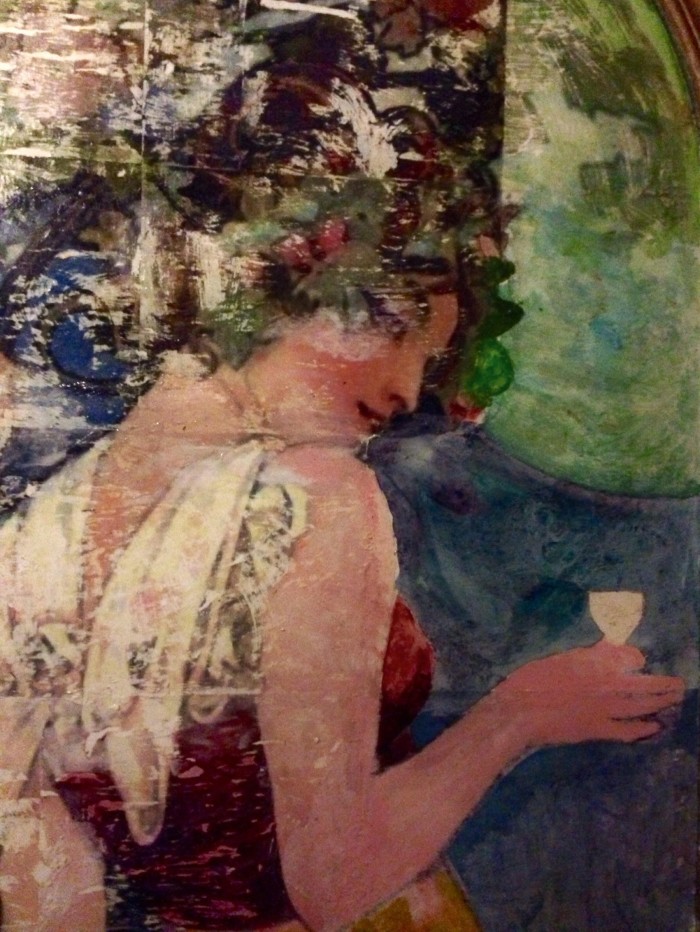
Roula Khalaf, Editor of the FT, selects her favourite stories in this weekly newsletter.
“They are very beautiful, very fragile and now very rare.” Surrey-based antique-glass specialist Mike Moir is describing the art nouveau stemware he has dealt in for the past 25 years. “Even new, they would have been very expensive, but having survived over a century makes them relics of a more elegant and decadent time.”
The era of these highly decorative and often colourful glasses is from around 1895 to just before the start of the first world war. “Art nouveau was a blaze of invention and audacity,” says Moir. “Designers were constantly experimenting with shape and size – glasses for wine, champagne, absinthe – creating both organic and architectural forms.” Now, new interest comes with rising prices.
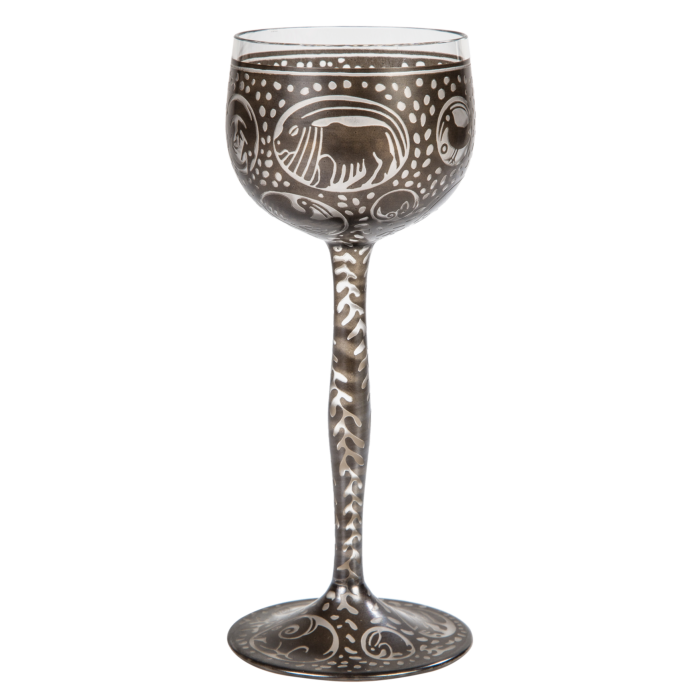
“In the past 20 years prices have doubled in the case of some designers,” says Winfried Leypoldt, 20th-century applied arts expert at Dr Fischer Kunstauktionen Fine Art Auctions in Heilbronn, Germany, which last year sold a single c1911 stem for €15,000. With its intricate etching of animals and bronze detail, it is the work of Austrian/German painter-cum-designer Ludwig Jungnickel and was produced for the venerable Bohemian glass company J & L Lobmeyr.
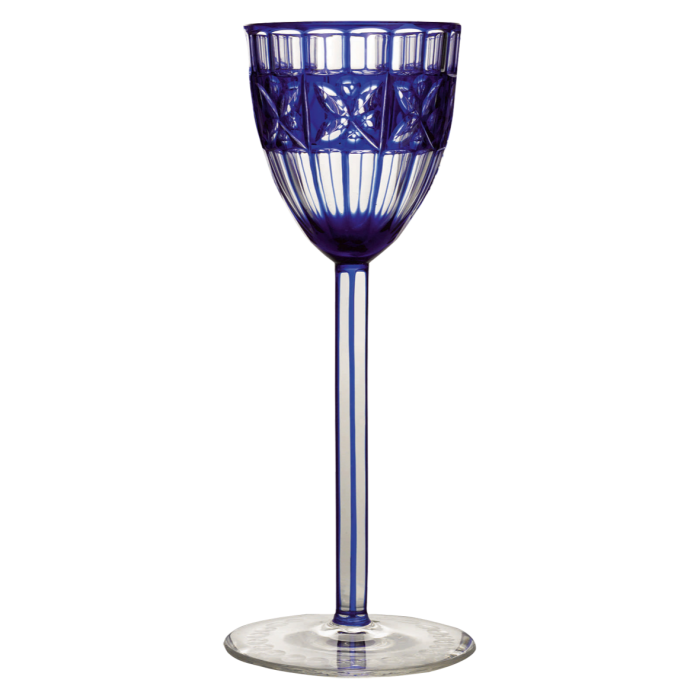
Jungnickel was working in one of art nouveau’s most vibrant hubs: Vienna, where he created pieces for the pioneering Wiener Werkstätte design company, founded in 1903 by Koloman Moser and Josef Hoffmann, an artist and architect respectively who six years earlier were among the progenitors of the Vienna Secession along with Gustav Klimt. “Wiener Werkstätte glass is rare and its value lies in its provenance,” explains Joy McCall, the London art nouveau specialist at Christie’s, which sold a pair of c1900 Moser liqueur glasses with exaggerated stems for $15,000 at a New York auction in 2013.
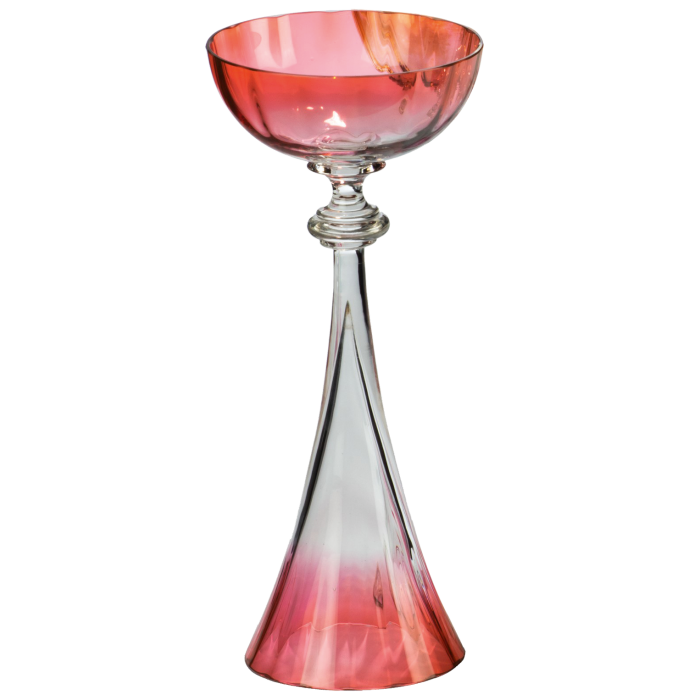
Moser’s standout designs include reversible champagne glasses with fluted bases (a set of 12 was sold by dealer James Strang at London’s Decorative Antiques & Textiles Fair for £2,400 in 2017) and the distinctive, dimpled Meteor pieces made by Meyr’s Neffe – another Bohemian glassworks. A set of six c1900 violet-hued Meteor wine glasses (€7,650) are available from Vienna’s Kunsthandel Kolhammer gallery, as is a pair of champagne coupes (€4,000). Hoffmann’s most iconic design is the 1912 cubist-inspired Serie B set, found in museums such as the Neue Galerie in Manhattan and still produced today by Lobmeyr (glasses, from $230).
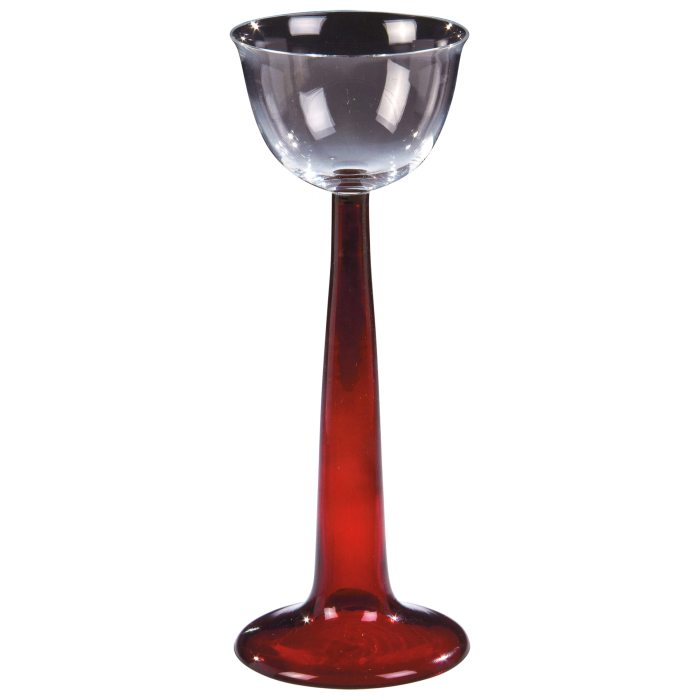
Another Austrian, Otto Prutscher, is also a hot property: last December, Sotheby’s New York sold a stunning set of 10 blue-patterned wine glasses for $42,500, while Kunsthandel Kolhammer gallery is offering a pair of Prutscher’s c1908 honey-yellow wine glasses for €24,000. “They are timeless yet extremely modern, and the execution is just perfect,” enthuses gallery co-owner Florian Kolhammer. “Also, this particular colour is rarely found.” More of Prutscher’s wine glasses and goblets, featuring his recognisable and labour-intensive facet‑cut stem, can be found at Vienna’s Galerie Kovacek.
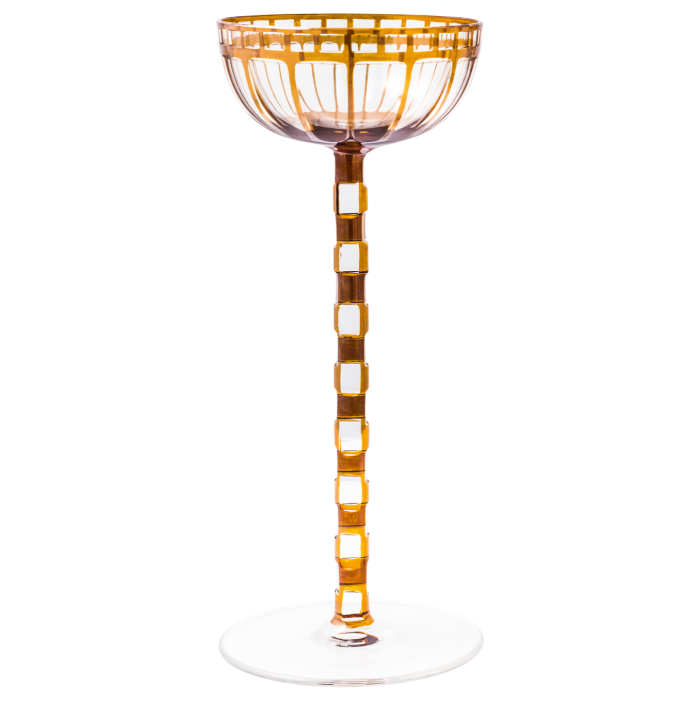
Austrian names aren’t the only desirable ones. German modernist architect Peter Behrens’ iconic c1900 wine goblets with deep-red thickening stems (a design still produced by Poschinger today) are much sought-after – an example fetched €6,500 in 2011 at Dr Fischer Auctions. And a c1900 set of 12 intaglio-cut wine glasses in green ombré by Bohemian Ludwig Moser (founder of Ludwig Moser & Söhne glassworks in 1857) is being offered for $7,200 by Massachusetts dealer Elise Abrams, who focuses on sets of 12 or more as her clients “tend to set their tables with these pieces”.
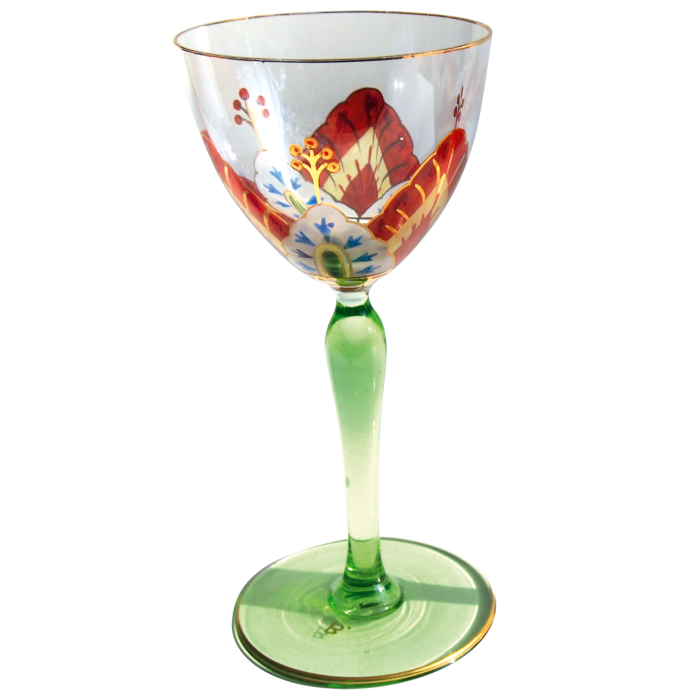
Also fond of using his most rarefied pieces is a Vienna-based businessman whose 200-strong collection is crowned by a complete set of six Prutscher wine glasses in yellow, pink, red, green, blue and violet. “When I or my wife strike a really good deal we toast it with glasses from my collection,” he says.
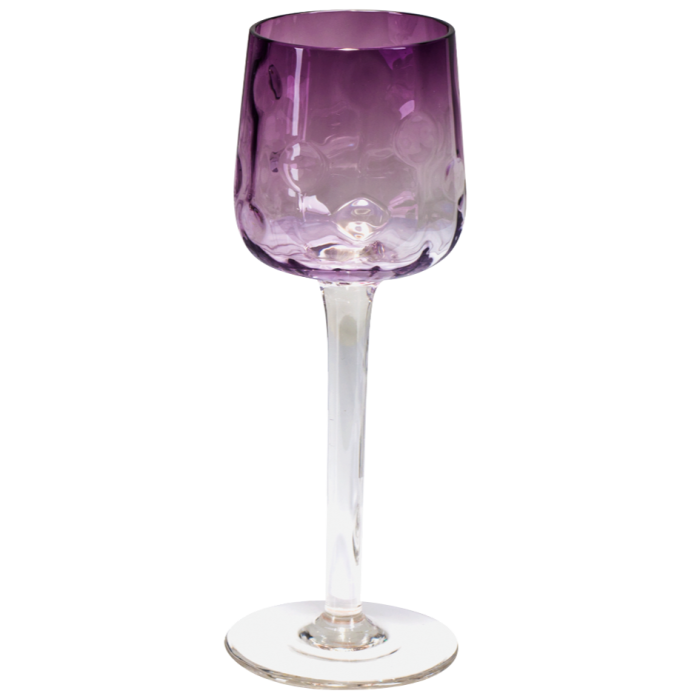
When it comes to display, “art nouveau glass was designed to be seen in daylight, whereas art deco glass was designed for electric light,” says Moir, whose stock includes a pair of c1900 Poschinger enamelled and gilded glasses with “almost psychedelic” flowers for £750, as well as a shimmering c1899 example by leading American light Louis Tiffany. Wrought in the iridescent favrile glass the house is famous for, the yellow stemmed design (£980) is shaped in a delicate floriform. “Tiffany’s designs tend to be more accessible, but for new collectors my top tip is this: go for a champagne coupe. They always sell much quicker than anything else.”
WHERE TO BUY
Christie’s, christies.com. The Decorative Antiques & Textiles Fair, decorativefair.com – next fair: January 21-26 2020. Dr Fischer Kunstauktionen Fine Art Auctions, auctions-fischer.de. Elise Abrams Antiques, eliseabramsantiques.com. Galerie Kovacek, kovacek.at. James Strang, james@decarts.co.uk. Kunsthandel Kolhammer, kunsthammer.at. Lobmeyr, lobmeyr.at. M&D Moir, 07843-022 591. Sotheby’s, sothebys.com
WHAT TO READ
The Glass of the Architects: Vienna 1900-1937, edited by Rainald Franz.
WHERE TO SEE
Leopold Museum, Museumsplatz 1, 1070 Vienna (+4315-2570 2645; leopoldmuseum.org). Neue Galerie, 1048 Fifth Avenue, New York, NY 10028 (+1212-994 9493; neuegalerie.org).
Comments